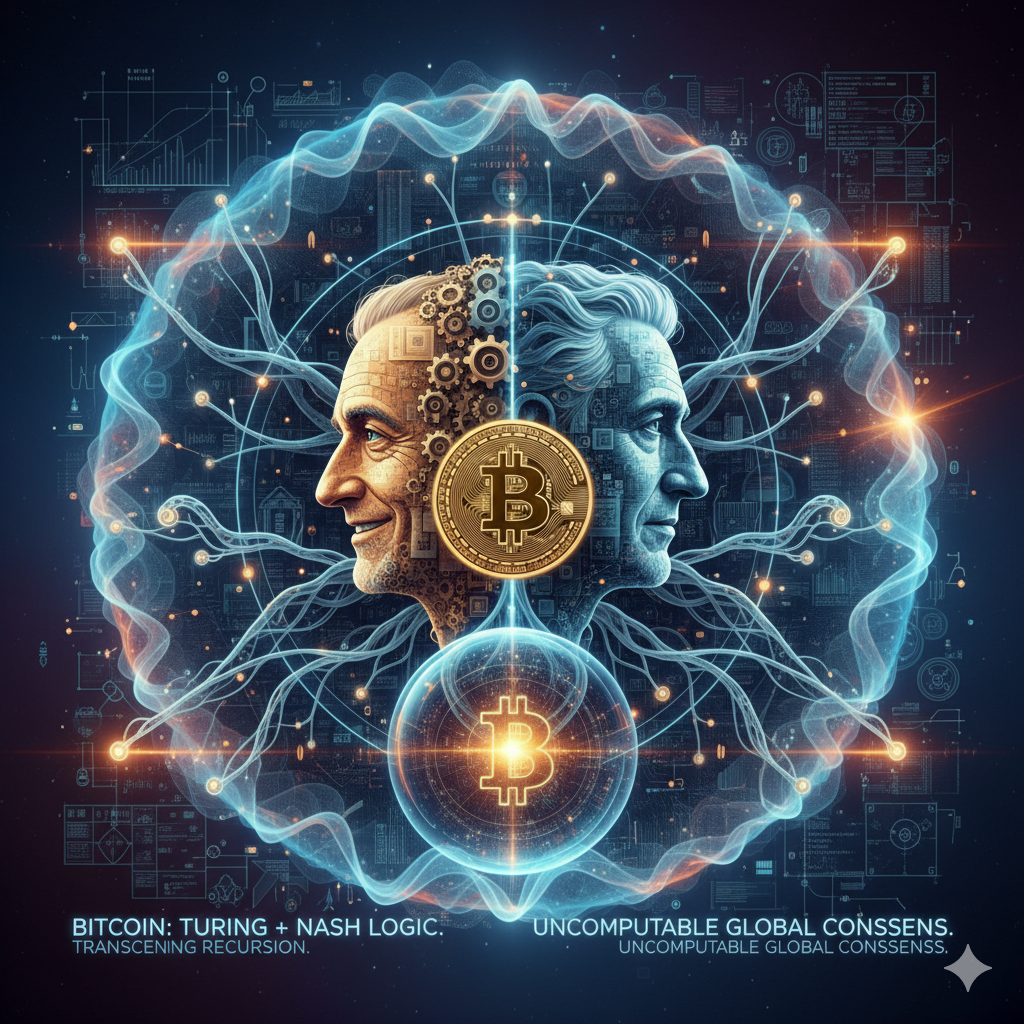
In the study of artificial intelligence, blockchain, and complex systems, one core question has always existed: how do we understand the boundaries of computation, and beyond this boundary, how is order established?
This article attempts to approach Bitcoin and broader complex systems from three ideas—Turing’s computability, the ordinal logic system, and Nash’s non-cooperative games.
The Turing machine defines the “mechanized” computable process: each step can be recursively completed through deterministic rules. But Turing himself realized that relying solely on mechanical steps could not cover all reasoning in mathematics and logic, so he introduced the ordinal logic system.
The core of ordinal logic is: At each level of recursion, there is not only mechanical computation, but also a necessary “non-recursive choice” (equivalent to the role of an oracle machine).
Therefore, ordinal logic can be expressed as: Ordinal Logic System = Recursive (Turing Machine + Choice/Oracle)
In other words, it is a recursive layering of “computation + non-computable choice.”
Nash placed this logic into the framework of game theory.
The global system does not rely on any single subject but is iteratively shaped by individuals in the game, eventually converging to a stable order. This is similar to the “Ship of Theseus”: the whole maintains identity while the parts are continuously replaced.
Bitcoin is precisely the realization of Nash’s layered introspective logic.
Therefore, Bitcoin is not only a currency but also a computable experimental ground for layered introspective logic.
From this perspective, the brain can also be understood as a kind of layered introspective logic:
In other words, thinking itself is a Nash-style layered game process.
Bitcoin demonstrates an important fact: A system without a center can still converge to a stable global order through rules + individual games.
This is not only an extension of computational theory, but also an inspiration for social organization, intelligent systems, and even the nature of the brain. In the future, we may be able to formalize this framework into hierarchical evolutionary equations, applying it to consensus algorithms, artificial intelligence, and cognitive science.
This is not only a technical issue but also a philosophical one about understanding the logic of how the world operates.